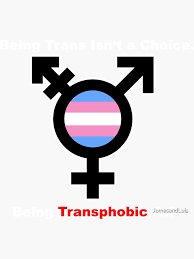Breast cancer can be a daunting diagnosis, but understanding the specific type of breast cancer one faces can make a world of difference in treatment and outcomes. Among the many subtypes, estrogen receptor-positive (ER positive) breast cancer is one of the most common. It’s essential to grasp the fundamentals of this type, the uniqueness of its characteristics, and the available treatment options. This guide aims to provide clear insights into ER positive breast cancer and the best paths for treatment, empowering patients and their families along the journey.
Understanding ER Positive Breast Cancer Basics
ER positive breast cancer is characterized by the presence of estrogen receptors on the surface of cancer cells. This means that these cells can grow in response to the hormone estrogen, which plays a significant role in the development and progression of the disease. Understanding this relationship is crucial, as it informs treatment strategies aimed at blocking estrogen’s effects. About 70% of breast cancers are hormone receptor-positive, making this subtype prevalent among patients.Gay Sissies Pics
Diagnosis often involves a combination of imaging tests, biopsies, and pathology reports. Once diagnosed, patients may feel overwhelmed by the medical jargon and treatment options. However, knowing that ER positive breast cancer is generally associated with a better prognosis compared to other types can be reassuring. The journey begins with understanding your unique cancer characteristics and how they influence treatment decisions.
What Makes ER Positive Breast Cancer Unique?
What sets ER positive breast cancer apart is its reliance on estrogen for growth. This dependency allows for targeted treatment approaches that can be particularly effective. Unlike other breast cancer types, which may not respond to hormone therapies, ER positive tumors often respond well to treatments designed to reduce estrogen levels in the body or block its effects. This specificity not only improves treatment outcomes but also offers a more tailored approach to managing the disease.
Another unique aspect is that the growth of ER positive tumors can be influenced by various factors, including age, genetic mutations, and the tumor’s grade. This means that every case is different, and treatment plans must be individualized. Moreover, as research continues to evolve, new findings are shedding light on the nuances of ER positive breast cancer, providing hope for improved therapies and outcomes.
Key Treatment Options for ER Positive Breast Cancer
When it comes to treating ER positive breast cancer, the first line of defense often includes surgery, either lumpectomy or mastectomy, depending on the tumor’s size and location. Following surgery, adjuvant therapies are typically employed to reduce the risk of recurrence. This often includes a combination of hormone therapy and, in some cases, chemotherapy, particularly for higher-grade tumors. The aim is to target any remaining cancer cells and prevent the disease from coming back.
In addition to these standard treatments, clinical trials are continually exploring new options, offering patients potentially groundbreaking therapies that are still under investigation. It’s essential for patients to discuss with their healthcare providers about any clinical trials that might be appropriate for their specific situation, as these can provide access to the latest advancements in treatment.
The Role of Hormone Therapy in Treatment Plans
Hormone therapy plays a crucial role in the treatment of ER positive breast cancer by targeting the cancer’s growth mechanism. The most common form is selective estrogen receptor modulators (SERMs), like tamoxifen, which blocks estrogen from binding to its receptor on cancer cells. This blockage can significantly reduce the risk of recurrence and improve survival rates. Another option is aromatase inhibitors, which lower estrogen levels in postmenopausal women by inhibiting the enzyme that converts androgens into estrogens.
Patients often take these therapies for several years, and adherence to the treatment can significantly impact long-term outcomes. Understanding the importance of hormone therapy and following through with the prescribed treatment regimen is crucial for maximizing the chances of a successful outcome. Regular follow-ups with healthcare providers are essential to monitor effectiveness and manage any side effects.
Targeted Therapies: What’s New in the Game?
Targeted therapies represent an exciting frontier in the treatment of ER positive breast cancer. These therapies specifically target cancer cells with less impact on normal cells, leading to potentially fewer side effects. Some newer options include CDK4/6 inhibitors, such as palbociclib, ribociclib, and abemaciclib, which work by interrupting the cancer cell cycle, ultimately slowing down tumor growth. These medications are often used in combination with hormone therapy for enhanced effectiveness.
Additionally, researchers are continually investigating other targeted therapies, including those that focus on specific genetic mutations associated with breast cancer. Each new discovery brings hope for more effective treatments that adapt to the individual needs of patients, emphasizing the importance of personalized medicine in oncology.
Lifestyle Changes That Support Your Treatment Journey
Alongside medical treatments, lifestyle changes can significantly impact a patient’s overall well-being and recovery. A balanced diet rich in fruits, vegetables, whole grains, and lean proteins can help support the body during treatment and aid in recovery. Staying hydrated and limiting processed foods and sugars can also be beneficial. Additionally, maintaining a healthy weight can reduce the risk of recurrence, as obesity is linked to worse outcomes in breast cancer survivors.
Physical activity is another vital component of a holistic treatment approach. Regular exercise can improve energy levels, enhance mood, and support overall health. Whether it’s walking, swimming, or participating in yoga, finding an enjoyable form of exercise can make a significant difference in a patient’s morale and quality of life during and after treatment.
Managing Side Effects of ER Positive Treatments
While treatments for ER positive breast cancer can be effective, they often come with side effects that can impact daily life. Common side effects from hormone therapies include hot flashes, fatigue, joint pain, and mood changes. It’s crucial for patients to communicate openly with their healthcare providers about any side effects they experience, as there are various strategies and medications available to help manage these symptoms effectively.
Additionally, exploring complementary therapies, such as acupuncture, mindfulness, or yoga, can provide relief and improve overall well-being. Support groups can also be valuable, offering emotional support and sharing coping strategies with others who are on a similar journey. Knowing that you are not alone can significantly help in managing the ups and downs of treatment.
Staying Positive: Support Systems and Resources Available
Navigating a breast cancer diagnosis can feel isolating, but having a solid support system is key to staying positive. Many patients find comfort in connecting with friends and family who can offer encouragement. However, support groups specifically for breast cancer patients can provide an additional layer of understanding. Sharing experiences and tips with others who are facing the same challenges can foster a sense of community and hope.
Furthermore, numerous resources are available, from helplines to online forums and local nonprofit organizations. These resources can provide information, emotional support, and even financial assistance for those in need. Utilizing these networks can help patients feel empowered and informed, ensuring they have the support they need throughout their treatment journey.
ER positive breast cancer may present its challenges, but understanding this specific type of cancer and the available treatment options can uplift patients and their families. With advances in hormone therapy and targeted treatments, alongside lifestyle changes and support systems, there is hope for improved outcomes and quality of life. Embracing a proactive approach and leaning on support networks can make a significant difference, allowing individuals to face their diagnosis with strength and resilience. Remember, you’re not alone in this journey—there’s a community out there ready to stand by your side.


